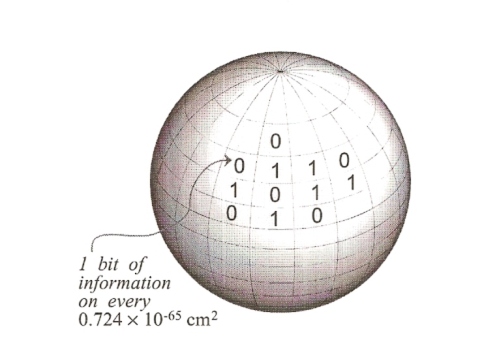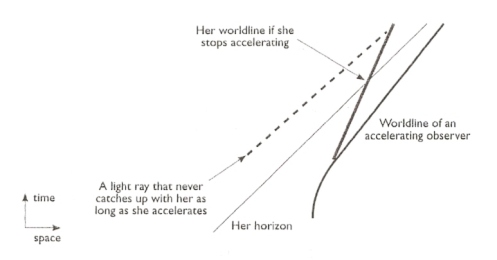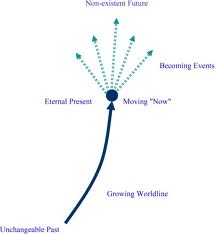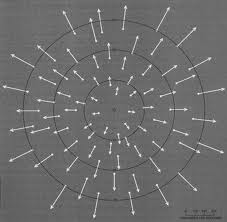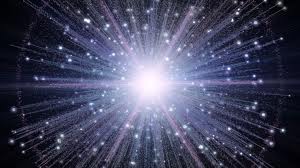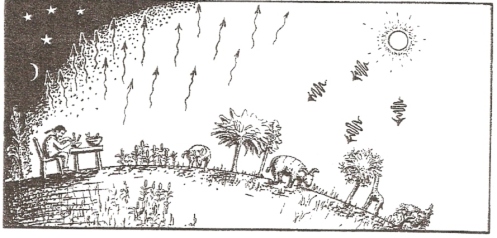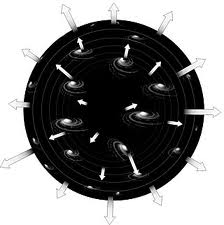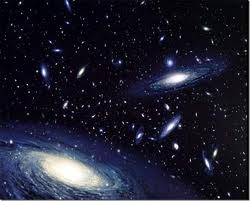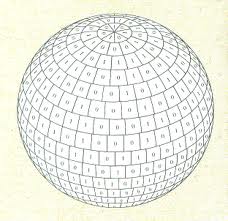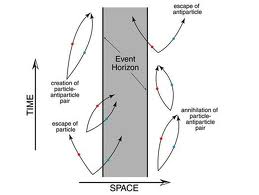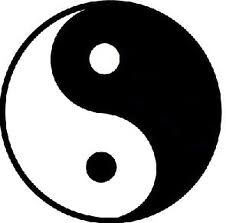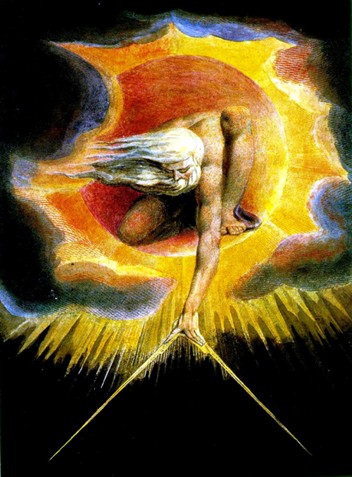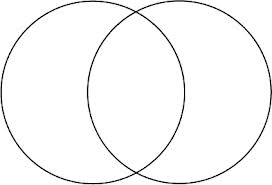Sanskrit As A Language Of Science
There is a misconception that Sanskrit language is only a
language for chanting mantras in temples or religious ceremonies. That,
actually, is less than 5% of the Sanskrit literature, more than 95% of which
has nothing to do with religion...
|
|
|
|||||||||
|
||||||||||
Full text of the speech delivered by Justice Markandey
Katju, Judge, Supreme Court of India on 13.10.2009 in the Indian
Institute of Science Bangalore
It is a great honour for me to be invited to speak in the Indian Institute of Science, Bangalore, which is renowned as one of the foremost scientific institutes in India, and which indeed is recognized as a great centre of science throughout the world. Your institute has produced great scientists of international repute.
It is a great honour for me to be invited to speak in the Indian Institute of Science, Bangalore, which is renowned as one of the foremost scientific institutes in India, and which indeed is recognized as a great centre of science throughout the world. Your institute has produced great scientists of international repute.
The topic which I have chosen to speak on today is
`Sanskrit as a language of Science'. I have chosen this topic for two reasons:
1. You are yourselves scientists, and hence would naturally
like to know about your scientific heritage and the great scientific
achievements of your ancestors.
2. Today India is facing huge problems, and, in my opinion,
these can only be solved by science.
We have to spread the scientific outlook to every nook and
corner of our country, if we are to progress. And by science I mean not just
physics, chemistry and biology but the entire scientific outlook. We must
develop the rational and questioning attitude in our people, and abolish
superstitions and empty rituals.
The foundation of India culture is based on the Sanskrit language. There is a misconception about the Sanskrit language that it is only a language for chanting mantras in temples or religious ceremonies. However, that is less than 5% of the Sanskrit literature. More than 95% of the Sanskrit literature has nothing to do with religion, and instead it deals with philosophy, law, science, literature, grammar, phonetics, interpretation etc. In fact, Sanskrit was the language of free thinkers, who questioned everything, and expressed the widest spectrum of thoughts on various subjects. In particular, Sanskrit was the language of our scientists in ancient India. Today, no doubt, we are behind the Western countries in science, but there was a time when India was leading the whole world in science. Knowledge of the great scientific achievements of our ancestors and our scientific heritage will give us the encouragement and moral strength to once again take India to the forefront of science in the modern world.
The word `Sanskrit' means “prepared, pure, refined or prefect”. It was not for nothing that it was called the `devavani' (language of the Gods). It has an outstanding place in our culture and indeed was recognized as a language of rare sublimity by the whole world. Sanskrit was the language of our philosophers, our scientists, our mathematicians, our poets and playwrights, our grammarians, our jurists, etc. In grammar, Panini and Patanjali (authors of Ashtadhyayi and the Mahabhashya) have no equals in the world; in astronomy and mathematics the works of Aryabhatta, Brahmagupta and Bhaskar opened up new frontiers for mankind, as did the works of Charak and Sushrut in medicine.
The foundation of India culture is based on the Sanskrit language. There is a misconception about the Sanskrit language that it is only a language for chanting mantras in temples or religious ceremonies. However, that is less than 5% of the Sanskrit literature. More than 95% of the Sanskrit literature has nothing to do with religion, and instead it deals with philosophy, law, science, literature, grammar, phonetics, interpretation etc. In fact, Sanskrit was the language of free thinkers, who questioned everything, and expressed the widest spectrum of thoughts on various subjects. In particular, Sanskrit was the language of our scientists in ancient India. Today, no doubt, we are behind the Western countries in science, but there was a time when India was leading the whole world in science. Knowledge of the great scientific achievements of our ancestors and our scientific heritage will give us the encouragement and moral strength to once again take India to the forefront of science in the modern world.
The word `Sanskrit' means “prepared, pure, refined or prefect”. It was not for nothing that it was called the `devavani' (language of the Gods). It has an outstanding place in our culture and indeed was recognized as a language of rare sublimity by the whole world. Sanskrit was the language of our philosophers, our scientists, our mathematicians, our poets and playwrights, our grammarians, our jurists, etc. In grammar, Panini and Patanjali (authors of Ashtadhyayi and the Mahabhashya) have no equals in the world; in astronomy and mathematics the works of Aryabhatta, Brahmagupta and Bhaskar opened up new frontiers for mankind, as did the works of Charak and Sushrut in medicine.
In philosophy Gautam (founder of the Nyaya system),
Ashvaghosha (author of Buddha Charita), Kapila (founder of the Sankhya
system), Shankaracharya, Brihaspati, etc., present the widest range of
philosophical systems the world has ever seen, from deeply religious to
strongly atheistic. Jaimini's Mimansa Sutras laid the foundation of a
whole system of rational interpretation of texts which was used not only in
religion but also in law, philosophy, grammar, etc. In literature, the
contribution of Sanskrit is of the foremost order. The works of Kalidas (Shakuntala,
Meghdoot, Malavikagnimitra, etc.), Bhavabhuti (Malti Madhav,
Uttar Ramcharit, etc.) and the epics of Valmiki, Vyas, etc. are known
all over the world. These and countless other Sanskrit works kept the light of
learning ablaze in our country upto modern times.
In this talk I am confining myself to only that part of Sanskrit literature which is related to science.
As already stated above, there is a great misconception about Sanskrit that it is only a language to be recited as mantras in temples or in religious ceremonies. However, that is only 5% of the Sanskrit literature. The remaining 95% has nothing to do with religion. In particular, Sanskrit was the language in which all our great scientists in ancient India wrote their works.
Before proceeding further, I may take a digression from the topic under discussion. In fact, I will be taking several digressions during the course of this talk, and initially you may think that this digression has nothing to do with the subject under discussion, viz. Sanskrit as a language of science, but at the end of the digression you will realize its intimate connection with the subject.
The first digression is to ask: What is India ? Although we are all Indians, many of us do not know our own country and hence I will explain.
In this talk I am confining myself to only that part of Sanskrit literature which is related to science.
As already stated above, there is a great misconception about Sanskrit that it is only a language to be recited as mantras in temples or in religious ceremonies. However, that is only 5% of the Sanskrit literature. The remaining 95% has nothing to do with religion. In particular, Sanskrit was the language in which all our great scientists in ancient India wrote their works.
Before proceeding further, I may take a digression from the topic under discussion. In fact, I will be taking several digressions during the course of this talk, and initially you may think that this digression has nothing to do with the subject under discussion, viz. Sanskrit as a language of science, but at the end of the digression you will realize its intimate connection with the subject.
The first digression is to ask: What is India ? Although we are all Indians, many of us do not know our own country and hence I will explain.
India is broadly a country of immigrants.
While North America (USA and Canada) is a country of new immigrants, who came mainly from Europe over the last four or five centuries, India is a country of old immigrants in which people came over the last ten thousand years or so. Probably about 95 % people living in India today are descendants of immigrants who came mainly from the North-West and to a lesser extent from the North-East. Since this is a point of great importance for the understanding of our country, it is necessary to go into it in some detail (for further details see my article Kalidas Ghalib Academy).
While North America (USA and Canada) is a country of new immigrants, who came mainly from Europe over the last four or five centuries, India is a country of old immigrants in which people came over the last ten thousand years or so. Probably about 95 % people living in India today are descendants of immigrants who came mainly from the North-West and to a lesser extent from the North-East. Since this is a point of great importance for the understanding of our country, it is necessary to go into it in some detail (for further details see my article Kalidas Ghalib Academy).
People migrate from uncomfortable areas to comfortable
areas. This is natural because everyone wants to live in comfort. Before the
coming of modern industry there were agricultural societies everywhere and
India was a paradise for these because agriculture requires level land, fertile
soil, plenty of water for irrigation, temperate climate etc. which was in
abundance in India. Why should anybody living in India migrate to, say,
Afghanistan which has a harsh terrain, rocky and mountainous and covered with
snow for several months in a year when one cannot grow any crop? Hence, almost
all immigrations and invasions came from outside into India (except those
Indians who were sent out during British rule as indentured labour, and the
recent migration of a few million Indians to the developed countries for job
opportunities). There is perhaps not a single instance of an invasion from
India to outside India.
India was a veritable paradise for agricultural societies because it has level & fertile land, hundreds of rivers, forests etc. and is rich in natural resources. Hence for thousands of years people kept pouring into India because they found a comfortable life here in a country which was gifted by nature.
As the great Urdu poet Firaq Gorakhpuri wrote:
India was a veritable paradise for agricultural societies because it has level & fertile land, hundreds of rivers, forests etc. and is rich in natural resources. Hence for thousands of years people kept pouring into India because they found a comfortable life here in a country which was gifted by nature.
As the great Urdu poet Firaq Gorakhpuri wrote:
“Sar zamin-e-hind par aqwaam-e-alam ke firaq
kafile guzarte gae Hindustan banta gaya”
kafile guzarte gae Hindustan banta gaya”
Which means: “In the land of Hind, the Caravans of the
peoples of the world kept coming in and India kept getting formed”.
Who were the original inhabitants of India ? At one time it was believed that the Dravidians were the original inhabitants. However, the generally accepted view now is that the original inhabitants of India were the pre-Dravidians aborigines whose descendants are the speakers of the Munda language who presently live in forest areas of Chota Nagpur, Chattisgarh, Jharkhand, Orissa, West Bengal etc., the Todas of the Nilgiris, and others known as Adivasis. Their population is only 5 to 7% of the total population of India. The remaining about 95% people living in India today are descendants of immigrants who came mainly from the north-west. Even the Dravidians are now believed to have come from outside, probably from the present Pakistan and Afghanistan areas, and this theory is supported by the existence even today of a Dravidian language called Brahui which is spoken by 3 million people in Western Pakistan (see Brahui on Google). In this connection one may also see ‘Cambridge History of India, Vol. I.
There are a large number of religions, castes, languages, ethnic groups, cultures etc. in our country, which is due to the fact that India is a country of immigrants. Somebody is tall, somebody is short, some are dark, some are fair complexioned, with all kinds of shades in between, someone has Caucasian features, someone has Mongoloid features, someone has Negroid features, etc. There are differences in dress, food habits and various other matters.
We may compare India with China which is larger both in population and in land area than India. China has a population of about 1.3 billion whereas our population is roughly 1.15 billion. Also, China has more than twice our land area. However, all Chinese have Mongoloid features; they have a common written script (Mandarin Chinese) and 95% of them belong to one ethnic group, called the Han Chinese. Hence there is broad homogeneity in China.
On the other hand, as stated above, India has tremendous diversity and this is due to the large scale migrations and invasions into India over thousands of years. The various immigrants/invaders who came into India brought with them their different cultures, languages, religions, etc. which accounts for the tremendous diversity in India.
As already stated above India was a country ideally suited for agriculture as it has level land, fertile soil, plenty of water, temperate climate etc. It is only in agricultural society that culture, arts and science can grow. In the preceding hunting stage these cannot grow because man has no free time in the hunting stage, and he has to devote all his time to get his food by hunting animals etc. The struggle for existence compels him to do this from morning to night leaving him no free time for doing free thinking. It is only when agriculture begins that man can get some free time for thinking. Since India was a country ideally suited for agriculture, people had free time here to do thinking. In ancient India there was a lot of intellectual activity. In our literature we read hundreds of instances of Shastrarthas, which were debates in which the intellectuals freely discussed their points of view in the presence of a large assembly. Thousands of books in Sanskrit were written on various subjects, though perhaps less than 10% have survived the ravages of time.
I have made this digression to point out that it was the geographical condition of India (flat and fertile land, temperate climate etc.) which enabled our ancestors to progress a lot in science and culture as our country was ideal for agriculture and hence provided a lot of free time for thinking.
Before dealing with the specific achievements of our ancestors in the fields of Mathematics, Astronomy, Medicine, Engineering, etc. it is necessary to mention that the Sanskrit language made two great contributions to the development and progress of science in ancient India. :-
1. A language was created by the great grammarian Panini, namely Classical Sanskrit, which enabled scientific ideas to be expressed with great precision, logic and elegance. Science requires precision. Also, science requires a written language in which ideas can be written with great precision and logic.
No doubt the first language of people everywhere in the world is the spoken language, but further development of thinking cannot take place unless there is a written language in which ideas can be expressed with precision. A scientist may think out new ideas in his mind, but these will remain rambling, diffused and disorganized ideas unless they are set down in writing. By writing we give our ideas greater clarity and make them coherent and in a logical sequence, somewhat like in a mathematical theorem where each step logically follows from the previous step. Hence for progress in science a written language is absolutely essential in which scientific ideas can be expressed with great precision and logic.
2. A philosophy is required for the progress of science to give support and encouragement to science and scientific development.
As regards the first point mentioned above I will have to make another digression and go a little deeper and must tell you a little about the development of the Sanskrit language.
In fact Sanskrit is not just one language, there are several Sanskrits. What we call Sanskrit today is really Panini's Sanskrit, also known as Classical Sanskrit or Laukik Sanskrit, and this is what is taught in our schools and universities today, and it is in this language that all our scientists wrote their great works. However, there were earlier Sanskrits too which were somewhat different from Classical Sanskrit.
The earliest Sanskrit work is the Rig Veda, which was probably composed around 2000 B.C. However, it was subsequently continued from generation to generation by oral tradition, and had to be memorized orally in the Gurukul by the young boys by repeating the verses chanted by their Guru. The Rig Veda is the most sacred of Hindu literature, and it consists of 1028 hymns (richas) to various nature gods e.g. Indra, agni, surya, soma, varuna etc.
Language changes with passage of time. For instance, it is difficult to understand Shakespeare's plays today without a good commentary because Shakespeare wrote in the 16th Century A.D. and since then the English language has changed. Many of the words and expressions which were in vogue in Shakespeare's time are no longer in vogue today. Hence we cannot understand Shakespeare's plays today without a good commentary.
Similarly, the Sanskrit language kept changing from around 2000 B.C. when the Rig Veda was composed to about 500 B.C. i.e. for about 1500 years. In the 5th Century B.C. the great scholar Panini, who was perhaps the greatest grammarian the world has ever seen, wrote his great book `Ashtadhyayi' (book of eight chapters). In this book Panini fixed the rules of Sanskrit, and thereafter no further changes in Sanskrit were permitted except slight changes made by two other great grammarians, namely, Katyayana who wrote his book called ‘Vartika’, and Patanjali who wrote his commentary on the Ashtadhyayi called the ‘Maha Bhashya’. Except for the slight changes by these two subsequent grammarians, Sanskrit as it exists today is really Panini's Sanskrit or Classical Sanskrit.
What Panini did was that he studied carefully the existing Sanskrit language in his time and then refined, purified and systematized it so as to make it a language of great logic, precision and elegance. Thus Panini made Sanskrit a highly developed and powerful vehicle of expression in which scientific ideas could be expressed with great precision and clarity. This language was made uniform all over India, so that scholars from North, South East and West could understand each other.
I am not going into the details about the Ashtadhyayi but I will give one small illustration in this connection.
In the English language the alphabets from A to Z are not arranged in any logical or rational manner. There is no reason why F is followed by G or why P is followed by Q, etc. The alphabets in English are all arranged haphazardly and at random. On the other hand, Panini in his first fourteen Sutras arranged alphabets in the Sanskrit language in a very scientific and logical manner, after close observation of the sounds in human speech.
Thus, for example the vowels, a, aa, i, ee, u, oo, ae, ai, o, ou are arranged according to the shape of the mouth when these sounds are emitted, a and aa, are pronounced from the throat, i and ee from the palate, o and oo from the lips, etc. In the same way the consonants have been arranged in a sequence on a scientific pattern. The (ka) varga (i.e. ka, kha, ga, gha, nga) are emitted from the throat, the (cha) varga from the palate, the ( ta ) varga from the roof of the mouth, the (ta ) varga from the teeth, and the (pa ) varga from the lips.
I venture to say that no language in the world has its alphabets arranged in such a rational and systematic manner. And when we see how deeply our ancestors went in the seemingly simple matter of arranging the alphabets we can realize how deeply they went in more advanced matters.
Panini's Sanskrit is called Classical Sanskrit, as I have already stated above, and it is in contrast with the earlier Vedic Sanskrit that is the language (or languages) in which the Vedas were written.
I may now be permitted another digression here to tell you about the meaning of the word ‘Veda’, but that digression is again necessary to understand what Panini did.
The word Veda (also called `Shruti') consists of four parts :-
1. Samhita or Mantra, which consists of the four books Rigveda, Yajurveda, Samveda and Atharvaveda. The word ‘Samhita’ means a collection, and Rigveda is a collection of hymns as already stated above. The principal Veda is the Rigveda, and it is written in poetic verses called ‘richas’. The Samveda is really Rigveda set to music, while about 2/3rd of the Richas (poems) of Yajurveda are taken from the Rigveda. Some people regard the Atharvaveda as a later addition to the Samhitas, which were earlier known as ‘trayi vidya’ consisting of the Rigveda, Yajurveda and Samveda.
Who were the original inhabitants of India ? At one time it was believed that the Dravidians were the original inhabitants. However, the generally accepted view now is that the original inhabitants of India were the pre-Dravidians aborigines whose descendants are the speakers of the Munda language who presently live in forest areas of Chota Nagpur, Chattisgarh, Jharkhand, Orissa, West Bengal etc., the Todas of the Nilgiris, and others known as Adivasis. Their population is only 5 to 7% of the total population of India. The remaining about 95% people living in India today are descendants of immigrants who came mainly from the north-west. Even the Dravidians are now believed to have come from outside, probably from the present Pakistan and Afghanistan areas, and this theory is supported by the existence even today of a Dravidian language called Brahui which is spoken by 3 million people in Western Pakistan (see Brahui on Google). In this connection one may also see ‘Cambridge History of India, Vol. I.
There are a large number of religions, castes, languages, ethnic groups, cultures etc. in our country, which is due to the fact that India is a country of immigrants. Somebody is tall, somebody is short, some are dark, some are fair complexioned, with all kinds of shades in between, someone has Caucasian features, someone has Mongoloid features, someone has Negroid features, etc. There are differences in dress, food habits and various other matters.
We may compare India with China which is larger both in population and in land area than India. China has a population of about 1.3 billion whereas our population is roughly 1.15 billion. Also, China has more than twice our land area. However, all Chinese have Mongoloid features; they have a common written script (Mandarin Chinese) and 95% of them belong to one ethnic group, called the Han Chinese. Hence there is broad homogeneity in China.
On the other hand, as stated above, India has tremendous diversity and this is due to the large scale migrations and invasions into India over thousands of years. The various immigrants/invaders who came into India brought with them their different cultures, languages, religions, etc. which accounts for the tremendous diversity in India.
As already stated above India was a country ideally suited for agriculture as it has level land, fertile soil, plenty of water, temperate climate etc. It is only in agricultural society that culture, arts and science can grow. In the preceding hunting stage these cannot grow because man has no free time in the hunting stage, and he has to devote all his time to get his food by hunting animals etc. The struggle for existence compels him to do this from morning to night leaving him no free time for doing free thinking. It is only when agriculture begins that man can get some free time for thinking. Since India was a country ideally suited for agriculture, people had free time here to do thinking. In ancient India there was a lot of intellectual activity. In our literature we read hundreds of instances of Shastrarthas, which were debates in which the intellectuals freely discussed their points of view in the presence of a large assembly. Thousands of books in Sanskrit were written on various subjects, though perhaps less than 10% have survived the ravages of time.
I have made this digression to point out that it was the geographical condition of India (flat and fertile land, temperate climate etc.) which enabled our ancestors to progress a lot in science and culture as our country was ideal for agriculture and hence provided a lot of free time for thinking.
Before dealing with the specific achievements of our ancestors in the fields of Mathematics, Astronomy, Medicine, Engineering, etc. it is necessary to mention that the Sanskrit language made two great contributions to the development and progress of science in ancient India. :-
1. A language was created by the great grammarian Panini, namely Classical Sanskrit, which enabled scientific ideas to be expressed with great precision, logic and elegance. Science requires precision. Also, science requires a written language in which ideas can be written with great precision and logic.
No doubt the first language of people everywhere in the world is the spoken language, but further development of thinking cannot take place unless there is a written language in which ideas can be expressed with precision. A scientist may think out new ideas in his mind, but these will remain rambling, diffused and disorganized ideas unless they are set down in writing. By writing we give our ideas greater clarity and make them coherent and in a logical sequence, somewhat like in a mathematical theorem where each step logically follows from the previous step. Hence for progress in science a written language is absolutely essential in which scientific ideas can be expressed with great precision and logic.
2. A philosophy is required for the progress of science to give support and encouragement to science and scientific development.
As regards the first point mentioned above I will have to make another digression and go a little deeper and must tell you a little about the development of the Sanskrit language.
In fact Sanskrit is not just one language, there are several Sanskrits. What we call Sanskrit today is really Panini's Sanskrit, also known as Classical Sanskrit or Laukik Sanskrit, and this is what is taught in our schools and universities today, and it is in this language that all our scientists wrote their great works. However, there were earlier Sanskrits too which were somewhat different from Classical Sanskrit.
The earliest Sanskrit work is the Rig Veda, which was probably composed around 2000 B.C. However, it was subsequently continued from generation to generation by oral tradition, and had to be memorized orally in the Gurukul by the young boys by repeating the verses chanted by their Guru. The Rig Veda is the most sacred of Hindu literature, and it consists of 1028 hymns (richas) to various nature gods e.g. Indra, agni, surya, soma, varuna etc.
Language changes with passage of time. For instance, it is difficult to understand Shakespeare's plays today without a good commentary because Shakespeare wrote in the 16th Century A.D. and since then the English language has changed. Many of the words and expressions which were in vogue in Shakespeare's time are no longer in vogue today. Hence we cannot understand Shakespeare's plays today without a good commentary.
Similarly, the Sanskrit language kept changing from around 2000 B.C. when the Rig Veda was composed to about 500 B.C. i.e. for about 1500 years. In the 5th Century B.C. the great scholar Panini, who was perhaps the greatest grammarian the world has ever seen, wrote his great book `Ashtadhyayi' (book of eight chapters). In this book Panini fixed the rules of Sanskrit, and thereafter no further changes in Sanskrit were permitted except slight changes made by two other great grammarians, namely, Katyayana who wrote his book called ‘Vartika’, and Patanjali who wrote his commentary on the Ashtadhyayi called the ‘Maha Bhashya’. Except for the slight changes by these two subsequent grammarians, Sanskrit as it exists today is really Panini's Sanskrit or Classical Sanskrit.
What Panini did was that he studied carefully the existing Sanskrit language in his time and then refined, purified and systematized it so as to make it a language of great logic, precision and elegance. Thus Panini made Sanskrit a highly developed and powerful vehicle of expression in which scientific ideas could be expressed with great precision and clarity. This language was made uniform all over India, so that scholars from North, South East and West could understand each other.
I am not going into the details about the Ashtadhyayi but I will give one small illustration in this connection.
In the English language the alphabets from A to Z are not arranged in any logical or rational manner. There is no reason why F is followed by G or why P is followed by Q, etc. The alphabets in English are all arranged haphazardly and at random. On the other hand, Panini in his first fourteen Sutras arranged alphabets in the Sanskrit language in a very scientific and logical manner, after close observation of the sounds in human speech.
Thus, for example the vowels, a, aa, i, ee, u, oo, ae, ai, o, ou are arranged according to the shape of the mouth when these sounds are emitted, a and aa, are pronounced from the throat, i and ee from the palate, o and oo from the lips, etc. In the same way the consonants have been arranged in a sequence on a scientific pattern. The (ka) varga (i.e. ka, kha, ga, gha, nga) are emitted from the throat, the (cha) varga from the palate, the ( ta ) varga from the roof of the mouth, the (ta ) varga from the teeth, and the (pa ) varga from the lips.
I venture to say that no language in the world has its alphabets arranged in such a rational and systematic manner. And when we see how deeply our ancestors went in the seemingly simple matter of arranging the alphabets we can realize how deeply they went in more advanced matters.
Panini's Sanskrit is called Classical Sanskrit, as I have already stated above, and it is in contrast with the earlier Vedic Sanskrit that is the language (or languages) in which the Vedas were written.
I may now be permitted another digression here to tell you about the meaning of the word ‘Veda’, but that digression is again necessary to understand what Panini did.
The word Veda (also called `Shruti') consists of four parts :-
1. Samhita or Mantra, which consists of the four books Rigveda, Yajurveda, Samveda and Atharvaveda. The word ‘Samhita’ means a collection, and Rigveda is a collection of hymns as already stated above. The principal Veda is the Rigveda, and it is written in poetic verses called ‘richas’. The Samveda is really Rigveda set to music, while about 2/3rd of the Richas (poems) of Yajurveda are taken from the Rigveda. Some people regard the Atharvaveda as a later addition to the Samhitas, which were earlier known as ‘trayi vidya’ consisting of the Rigveda, Yajurveda and Samveda.
2. The Brahmanas, which are books written in prose in which
the method of performing the various yagyas is given. Each Brahmana is attached
to some Samhita. Thus attached to the Rigveda is the Aitareya Brahmana and the
Kaushiteki Brahmana, attached to the Samveda is the Tandya Brahmana and some
other Brahmanas, attached to the white (shukla) Yajurveda is the Shatapatha
Brahmana and some other Brahmanas, attached to the black (Krishna) Yajurveda is
the Taitareya Brahmana and some other Brahmana, attached to the Atharvaveda is
the Gopath Brahmana. As stated above, these Brahmana are written in prose,
unlike the Samhitas which are mainly in poetry, and they prescribe the rules
for performing the various yagyas.
3. The Aranyaks, which are forest books. These contain the
germs of philosophical thought, though in undeveloped form.
4. The Upanishads which incorporated developed
philosophical ideas.
The above four, namely, the Samhitas, the Brahmanas, the Aranyaks, and the Upanishads collectively are known as Veda or Shruti.
The Brahmanas were written subsequent to the Samhitas, and their language is somewhat different from that of the Samhitas, obviously because the Sanskrit language had changed by the time they were written. Similarly, the Aranyaks were written subsequent to the Brahmanas, and, the Sanskrit of the Aranyaks is slightly different from that of the Brahmanas. The last part of the Veda is the Upanishads, and the language of the Upanishads is different from that of earlier Vedic works for the reason that the Sanskrit language kept changing over the centuries, as already stated above. The Sanskrit of the Upanishads is closest to Panini's Sanskrit.
After Panini wrote his Ashtadhyayi the entire non-Vedic Sanskrit literature was written in accordance with Panini's grammar, and even that part of the non-Vedic Sanskrit literature which existed before Panini was altered and made in accordance with Panini's grammar (except some words called apashabdas).
The Vedic literature is only about 1% of the entire Sanskrit literature. About 99% of Sanskrit literature is non vedic Sanskrit literature. For instance, the Ramayana, the Mahabharata, the Puranas, the works of Kalidas, etc. are no doubt highly respected but they are not part of the Vedic literature and hence they are now almost all existing in accordance with Panini's grammar.
To illustrate, some parts of the Mahabharata were written before Panini because Panini has referred to the Mahabharat in his Ashtadhyayi. Even such parts of the Mahabharata were altered and made in accordance with Panini’s grammar. Thus today all of the Sanskrit non-Vedic literature is in accordance with Panini's grammar, except a few words and expressions, called Apashabdas or apabhramshas (as Patanjali has described them) which for some reason could not be fitted into Panini’s system, and hence have been left as they were.
However, it was not permissible to change the language of the Rigveda and make it in accordance with Panini's grammar. Panini or no Panini, one could not touch the Rigveda, because it was held to be so sacred that it was not permitted to change its language. In fact after having been initially composed may be around 2000 B.C. the Rigveda was thereafter never written and it continued from generation to generation by oral tradition from Guru to Shishya.
Thus the Vedic literature is not in accordance with the Panini's grammar. However, the non-Vedic Sanskrit literature (which is 99% of the entire Sanskrit literature) is almost all in accordance with Panini's grammar, including all the great scientific works. This provided for uniformity and it systematized the language so that scholars could easily express and communicate their ideas with great precision. This was a necessary requirement for the development of science.
The spoken language no doubt is very useful, but the spoken dialects change every 50 or 100 kilometers, and hence there is no uniformity in them. A written language like Classical Sanskrit in which scholars could express and communicate ideas to other scholars living far away with great precision and clarity was thus absolutely necessary for the development of science, and this is the great achievement of Panini.
As regards the second factor contributing to the development of science in ancient India, namely, scientific philosophy I would now like to tell you something about Indian philosophy. Hence I am making another digression.
The generally accepted view is that there are six systems of Classical (orthodox) Indian philosophy (Shat Dharshana) and three non classical (unorthodox) systems. The six classical (orthodox) systems are Nyaya, Vaisheshik, Sankya, Yoga, Purva Mimansa and Uttar Mimansa (also known as Vedanta). The non classical (unorthodox) systems are Buddhism, Jainism and Charvak.
The Shatdarshanas are given below, with a brief mention of their viewpoints
Shatdarshana or six classical (orthodox) schools of Indian philosophy
1. Nyaya – presents the scientific outlook . It insists that nothing is acceptable unless it is in accordance with reason and experience. It was subsequently distorted by the later Nyayiks.
2. Vaisheshik – presents the atomic theory.
3. Sankhya – Probably presents the materialist ontology of the Nyaya Vaisheshik system. However, very little of the original literature on Sankhya has survived, and there is some controversy about its basic principles, some saying that it is dualistic and not monistic because it has two entities, purush and prakriti, in it.
4. Yoga – presents a method of physical and mental discipline
5. Purva mimansa (or briefly mimansa) – lays emphasis on the performance of the yagya for attaining various spiritual and worldly benefits. Hence relies on the Brahmana part of the Vedas.
6. Uttar Mimansa (or Vedanta) – lays emphasis on brahmagyan, hence relies on the Upanishad part of the Vedas.
It is said that the classical and non-classical system of philosophy differ in that the former accept the authority of the Vedas while the latter do not. However this does not seem to be correct as a close examination shows that the first 4 classical systems do not really accept the authority of the Vedas (though some of them pay lip service to it). It is the last two, the Purva Mimansa and the Uttar Mimansa, which certainly rely on the Veda.
I need not dilate on all these systems and it is only necessary to mention about the Nyaya and Vaisheshik systems, which represent the scientific outlook. Nyaya philosophy states that nothing is acceptable unless it is in accordance with reason and experience, and this is precisely the scientific approach (see in this connection D.P. Chattopadhyaya’s What is Living and What is Dead in Indian Philosophy which is a seminal work on Indian Philosophy). Vaisheshik is the atomic (parmanu) theory, which was the physics of ancient India. Originally Nyaya and Vaisheshik were regarded as one system, but since physics is the most fundamental of all sciences, the Vaisheshik system was later separated from Nyaya and made as a separate system of philosophy.
It may be added here that the Sankhya system is perhaps older than the Nyaya Vaisheshik systems but very little literature on it has survived (the Sankhya Karika and Sankhya Sutras and commentaries on them). However, the Sankhya philosophy certainly seems to have given the materialist ontological foundation on which the later Nyaya-Vaisheshik scientific philosophy was built, and hence we can broadly call the Indian philosophy representing the scientific approach as the Sankhya-Nyaya-Vaisheshik system. However, in brief we are calling it the Nyaya-Vaisheshik system, since we know much more about Nyaya and Vaisheshik then we know about Sankhya.
The Nyaya Vaisheshik system is (i) realist, and (2) pluralistic. This is in contrast to Advaita Vedanta of Shankaracharya which is monastic and regards the world as illusion or maya in the ultimate analysis. The word ‘pluralistic’ is in contrast to the word ‘monistic’. The word ‘monistic’ means that there is only one entity in the world. Shankaracharya’s Advaita philosophy says that there is only one entity in the world i.e. Brahman whereas the various objects like table, glass, pen, room etc. are not different from each other, and their difference is only an illusion. On the other hand, the Nyaya Vaisheshik systems says that there are several real entities and the world comprises of not just one entity, but a large number of entities which are different e.g. table, book, room, human bodies etc. Hence the Nyaya philosophy is pluralistic and not monistic.
In this connection it is important to again digress a bit and tell you something about philosophy.
The two most important branches of philosophy are ontology and epistemology. Ontology is the study of existence. In other words, in ontology the questions asked are what really exists? Does God exist? Does the world exist or is it illusion (maya)? What is real, and what is only apparently real?
Epistemology is the study of the means of valid knowledge. For instance, how do I know that this object in front of me exists? The answer is that it is Pratyaksha? I can see it with my eyes Pratyaksha is the knowledge which we derive from the five senses, and pratyaksha pramana is regarded as the pradhan pramana or the most basic of all the means of valid knowledge.
However, there are other pramanas e.g. anuman (inference), shabda (statement of some expert or authoritative persons) etc. Thus, much of scientific knowledge comes from anuman pramana. For instance, Rutherford never saw an atom with his eyes, but by studying the scattering of alpha rays (which are positively charged helium ions) he used anuman praman (inference) to deduce that there was a positively charged nucleus around which negatively charged electrons were orbiting. Similarly, black holes can not be known by pratyaksha pramana (since light cannot escape from them), but we can infer their existence by the movement of some nearby heavenly bodies on which an invisible body (the black hole) is exercising a gravitational pull.
The third Pramana in the epistemology of the Nyaya system is Shabda Pramana, which is the statement of an expert or a person having great reputation in a particular field. We often accept such statements to be correct, even though we may not understand the proof, because the person making it has a reputation of an expert.
For instance, we accept that e=mc2 as Shabda pramana since Einstein has a great reputation as a theoretical physicist, although we ourselves may be unable to understand how he reached that equation (as that will require a knowledge of higher mathematics and physics which we may not possess). Similarly, we accept what our doctor tells us about our ailment, as he is an expert.
There is another pramana called upama (analogy) in the Nyaya system, but we need not go into it here.
As already stated above, the Nyaya Philosophy represents the scientific outlook, and it places great emphasis on the pratyaksha pramana (though this too may sometimes be deceptive e.g. a mirage). This is also the approach of science because in science we largely rely on observation, experiment and logical inferences.
It may be mentioned that Pratyaksha pramana may not necessarily lead to truthful knowledge in all cases. For instance, we see the sun rising from the east in the morning, going up above us in the mid-day, and setting in the west. If we rely only on Pratyaksha Pramana we would conclude that the sun goes around the earth. However the great mathematician and astronomer Aryabhata in his book Arybhatiya wrote that the same visual impression will be created if we assume that the earth is spinning on its axis. In other words, if the earth is rotating on its axis it will appear that the sun rises form the east and sets in the west. Hence along with Pratyaksha Pramana we have also to apply reason, as observation alone may not always lead to truthful knowledge.
It may be mentioned that the Nyaya philosophy developed logic to an extent even beyond what Aristotle and other Greek thinkers did (see D.P. Chattopadhyaya’s books in this connection), and logical thinking is necessary for science.
Thus the Nyaya philosophy gave great support and encouragement to science in ancient India. It must be mentioned that the Nyaya philosophy is one of the Shat Darshanas i.e. one of the six orthodox systems in Indian philosophy, and not an unorthodox system like the Charvaks. Hence our great scientists could not be persecuted by the orthodox people since they could say that they were relying on an orthodox philosophy, namely, the Nyaya. This was unlike in Europe where some of the greatest scientists like Galileo were persecuted by the Church for preaching ideas inconsistent with the Bible.
In ancient India there were everywhere debates or Shashtrarthas which permitted free discussion of ideas, criticism of one’s opponent, and free dissent in the presence of a large gathering. Such freedom of thought and expression led to great development of science, since science also requires freedom, freedom to think, freedom to express one’s ideas, and freedom to dissent. The great scientist Charak has mentioned in his book Charak samhita that debating is necessary for the development of science, particularly debating with one’s mental equals.
In the earliest Nyaya text, which is the Nyaya Sutras of Gautam, several categories of debate are mentioned e.g. vad, jalp, vitanda, etc These were further developed by the subsequent writers of Nyaya
Having explained these two factors which gave great encouragement to the development and progress of science we may now come to the specific subjects of science dealt with by our ancient scientists.
MATHEMATICS
The decimal system was perhaps the most revolutionary and greatest scientific achievement in the ancient world in mathematics. The numbers in the decimal system were called Arabic numerals by the Europeans, but surprisingly the Arab scholars called them Hindu numerals. Were they really Arabic or Hindu? In this connection it may be mentioned that the languages Urdu, Persian and Arabic are written from right to left but if you ask any speaker of these languages to write any number e.g. 257 he will write the number from left to right. This shows that these numbers were taken from a language which was written from left to right and not from right to left. It is accepted now that these numbers came from India and they were copied by the Arabs from us.
I would like to illustrate the revolutionary significance of the decimal system. As we all know, ancient Rome was a great civilization, the civilization of Caesar and Augustus, but if one would have asked an ancient Roman to write the number one million he would have almost gone crazy because to write one million he would have to write the letter M which stands for millennium (or one thousand) one thousand times. In the Roman numerals there is no single number greater than M, which stands for one thousand. To write 2000 we have to write MM, to write 3000 we have to write MMM, and to write one million one has to write M one thousand times.
On the other hand, under our system to express one million we have just to write the number one followed by six zeros.
In the Roman numerals there is no zero. Zero was an invention of ancient India and progress was not possible without this invention.
I am not going into details about the great contributions of our great mathematicians like Aryabhatta, Brahamgupta, Bhaskar, Varahamihira etc. and you can read about them by using Google. However, I may just give two simple illustrations in this connection.
The number 1,00,000 is called a lakh in the Indian numeral system. 100 lacs is called one crore, 100 crores is called one arab, 100 arabs is called one kharab, 100 kharabs is called one neel, 100 neels is called one padma, 100 padmas is called one shankh, 100 shankh is called one mahashankh, etc. Thus one mahashankh will be the number 1 followed by 19 zeros (for further details you may see V.S. Apte's Sanskrit English Dictionary on the internet by using Google). On the other hand the ancient Romans could not express any number larger than one thousand except by repeating M and the other numerals again and again.
Take another illustration. According to the Agni Purana, the Kaliyuga in which we are living consists of 4, 32, 000 years. The preceding Yuga is known as the Dwapar Yuga and is twice as long as the Kaliyuga. Preceding the Dwapar Yuga, is the Treta Yuga which is thrice the duration of the Kaliyuga. The Yuga preceding Treta Yuga is the Satyuga which was said to be four times longer than the Kaliyuga. One Kaliyuga, one Dwapar Yuga, one Treta Yuga and one Satyuga are collectively known as one Chaturyugi (or 43 lacs 20 thousand years). Fifty Six Chaturyugis are known as one Manovantar. Fourteen Manovantars is known as one Kalpa. Twelve Kalpas make one day of Brahma. Brahma is believed to have lived for billions or trillions of years.
When our people do the sankalp, which is to be done everyday by orthodox people, they have to mention the exact day, month and year of the Kaliyuga as well as the Chaturyugi, Manovantar and kalpa in which we are living. It is said that we are living today in the 28th Chaturyugi in our present Manovantar, that is to say half the Manovantar of our Kalpa is over, but the remaining Manovantar is yet to be completed. We are living presently in the Vaivasvata Manuvantar.
One may or may not believe the above system, but one can only marvel at the flight of imagination of our ancestors who could conceive of billions or trillions of years in history.
Aryabhatta in his famous book called the Aryabhatiya wrote about algebra, arithmetic, trigonometry, quadratic equations and the sine table. He calculated the value of Pi at 3.1416, which is close to the actual value which is about 3.14159. Aryabhatta's works were later adopted by the Greeks and then the Arabs.
I am not going into the contribution of the other mathematicians e.g. Brahmagupta, Bhaskar, Varahamihira etc. as that will take too much time.
ASTRONOMY
The above four, namely, the Samhitas, the Brahmanas, the Aranyaks, and the Upanishads collectively are known as Veda or Shruti.
The Brahmanas were written subsequent to the Samhitas, and their language is somewhat different from that of the Samhitas, obviously because the Sanskrit language had changed by the time they were written. Similarly, the Aranyaks were written subsequent to the Brahmanas, and, the Sanskrit of the Aranyaks is slightly different from that of the Brahmanas. The last part of the Veda is the Upanishads, and the language of the Upanishads is different from that of earlier Vedic works for the reason that the Sanskrit language kept changing over the centuries, as already stated above. The Sanskrit of the Upanishads is closest to Panini's Sanskrit.
After Panini wrote his Ashtadhyayi the entire non-Vedic Sanskrit literature was written in accordance with Panini's grammar, and even that part of the non-Vedic Sanskrit literature which existed before Panini was altered and made in accordance with Panini's grammar (except some words called apashabdas).
The Vedic literature is only about 1% of the entire Sanskrit literature. About 99% of Sanskrit literature is non vedic Sanskrit literature. For instance, the Ramayana, the Mahabharata, the Puranas, the works of Kalidas, etc. are no doubt highly respected but they are not part of the Vedic literature and hence they are now almost all existing in accordance with Panini's grammar.
To illustrate, some parts of the Mahabharata were written before Panini because Panini has referred to the Mahabharat in his Ashtadhyayi. Even such parts of the Mahabharata were altered and made in accordance with Panini’s grammar. Thus today all of the Sanskrit non-Vedic literature is in accordance with Panini's grammar, except a few words and expressions, called Apashabdas or apabhramshas (as Patanjali has described them) which for some reason could not be fitted into Panini’s system, and hence have been left as they were.
However, it was not permissible to change the language of the Rigveda and make it in accordance with Panini's grammar. Panini or no Panini, one could not touch the Rigveda, because it was held to be so sacred that it was not permitted to change its language. In fact after having been initially composed may be around 2000 B.C. the Rigveda was thereafter never written and it continued from generation to generation by oral tradition from Guru to Shishya.
Thus the Vedic literature is not in accordance with the Panini's grammar. However, the non-Vedic Sanskrit literature (which is 99% of the entire Sanskrit literature) is almost all in accordance with Panini's grammar, including all the great scientific works. This provided for uniformity and it systematized the language so that scholars could easily express and communicate their ideas with great precision. This was a necessary requirement for the development of science.
The spoken language no doubt is very useful, but the spoken dialects change every 50 or 100 kilometers, and hence there is no uniformity in them. A written language like Classical Sanskrit in which scholars could express and communicate ideas to other scholars living far away with great precision and clarity was thus absolutely necessary for the development of science, and this is the great achievement of Panini.
As regards the second factor contributing to the development of science in ancient India, namely, scientific philosophy I would now like to tell you something about Indian philosophy. Hence I am making another digression.
The generally accepted view is that there are six systems of Classical (orthodox) Indian philosophy (Shat Dharshana) and three non classical (unorthodox) systems. The six classical (orthodox) systems are Nyaya, Vaisheshik, Sankya, Yoga, Purva Mimansa and Uttar Mimansa (also known as Vedanta). The non classical (unorthodox) systems are Buddhism, Jainism and Charvak.
The Shatdarshanas are given below, with a brief mention of their viewpoints
Shatdarshana or six classical (orthodox) schools of Indian philosophy
1. Nyaya – presents the scientific outlook . It insists that nothing is acceptable unless it is in accordance with reason and experience. It was subsequently distorted by the later Nyayiks.
2. Vaisheshik – presents the atomic theory.
3. Sankhya – Probably presents the materialist ontology of the Nyaya Vaisheshik system. However, very little of the original literature on Sankhya has survived, and there is some controversy about its basic principles, some saying that it is dualistic and not monistic because it has two entities, purush and prakriti, in it.
4. Yoga – presents a method of physical and mental discipline
5. Purva mimansa (or briefly mimansa) – lays emphasis on the performance of the yagya for attaining various spiritual and worldly benefits. Hence relies on the Brahmana part of the Vedas.
6. Uttar Mimansa (or Vedanta) – lays emphasis on brahmagyan, hence relies on the Upanishad part of the Vedas.
It is said that the classical and non-classical system of philosophy differ in that the former accept the authority of the Vedas while the latter do not. However this does not seem to be correct as a close examination shows that the first 4 classical systems do not really accept the authority of the Vedas (though some of them pay lip service to it). It is the last two, the Purva Mimansa and the Uttar Mimansa, which certainly rely on the Veda.
I need not dilate on all these systems and it is only necessary to mention about the Nyaya and Vaisheshik systems, which represent the scientific outlook. Nyaya philosophy states that nothing is acceptable unless it is in accordance with reason and experience, and this is precisely the scientific approach (see in this connection D.P. Chattopadhyaya’s What is Living and What is Dead in Indian Philosophy which is a seminal work on Indian Philosophy). Vaisheshik is the atomic (parmanu) theory, which was the physics of ancient India. Originally Nyaya and Vaisheshik were regarded as one system, but since physics is the most fundamental of all sciences, the Vaisheshik system was later separated from Nyaya and made as a separate system of philosophy.
It may be added here that the Sankhya system is perhaps older than the Nyaya Vaisheshik systems but very little literature on it has survived (the Sankhya Karika and Sankhya Sutras and commentaries on them). However, the Sankhya philosophy certainly seems to have given the materialist ontological foundation on which the later Nyaya-Vaisheshik scientific philosophy was built, and hence we can broadly call the Indian philosophy representing the scientific approach as the Sankhya-Nyaya-Vaisheshik system. However, in brief we are calling it the Nyaya-Vaisheshik system, since we know much more about Nyaya and Vaisheshik then we know about Sankhya.
The Nyaya Vaisheshik system is (i) realist, and (2) pluralistic. This is in contrast to Advaita Vedanta of Shankaracharya which is monastic and regards the world as illusion or maya in the ultimate analysis. The word ‘pluralistic’ is in contrast to the word ‘monistic’. The word ‘monistic’ means that there is only one entity in the world. Shankaracharya’s Advaita philosophy says that there is only one entity in the world i.e. Brahman whereas the various objects like table, glass, pen, room etc. are not different from each other, and their difference is only an illusion. On the other hand, the Nyaya Vaisheshik systems says that there are several real entities and the world comprises of not just one entity, but a large number of entities which are different e.g. table, book, room, human bodies etc. Hence the Nyaya philosophy is pluralistic and not monistic.
In this connection it is important to again digress a bit and tell you something about philosophy.
The two most important branches of philosophy are ontology and epistemology. Ontology is the study of existence. In other words, in ontology the questions asked are what really exists? Does God exist? Does the world exist or is it illusion (maya)? What is real, and what is only apparently real?
Epistemology is the study of the means of valid knowledge. For instance, how do I know that this object in front of me exists? The answer is that it is Pratyaksha? I can see it with my eyes Pratyaksha is the knowledge which we derive from the five senses, and pratyaksha pramana is regarded as the pradhan pramana or the most basic of all the means of valid knowledge.
However, there are other pramanas e.g. anuman (inference), shabda (statement of some expert or authoritative persons) etc. Thus, much of scientific knowledge comes from anuman pramana. For instance, Rutherford never saw an atom with his eyes, but by studying the scattering of alpha rays (which are positively charged helium ions) he used anuman praman (inference) to deduce that there was a positively charged nucleus around which negatively charged electrons were orbiting. Similarly, black holes can not be known by pratyaksha pramana (since light cannot escape from them), but we can infer their existence by the movement of some nearby heavenly bodies on which an invisible body (the black hole) is exercising a gravitational pull.
The third Pramana in the epistemology of the Nyaya system is Shabda Pramana, which is the statement of an expert or a person having great reputation in a particular field. We often accept such statements to be correct, even though we may not understand the proof, because the person making it has a reputation of an expert.
For instance, we accept that e=mc2 as Shabda pramana since Einstein has a great reputation as a theoretical physicist, although we ourselves may be unable to understand how he reached that equation (as that will require a knowledge of higher mathematics and physics which we may not possess). Similarly, we accept what our doctor tells us about our ailment, as he is an expert.
There is another pramana called upama (analogy) in the Nyaya system, but we need not go into it here.
As already stated above, the Nyaya Philosophy represents the scientific outlook, and it places great emphasis on the pratyaksha pramana (though this too may sometimes be deceptive e.g. a mirage). This is also the approach of science because in science we largely rely on observation, experiment and logical inferences.
It may be mentioned that Pratyaksha pramana may not necessarily lead to truthful knowledge in all cases. For instance, we see the sun rising from the east in the morning, going up above us in the mid-day, and setting in the west. If we rely only on Pratyaksha Pramana we would conclude that the sun goes around the earth. However the great mathematician and astronomer Aryabhata in his book Arybhatiya wrote that the same visual impression will be created if we assume that the earth is spinning on its axis. In other words, if the earth is rotating on its axis it will appear that the sun rises form the east and sets in the west. Hence along with Pratyaksha Pramana we have also to apply reason, as observation alone may not always lead to truthful knowledge.
It may be mentioned that the Nyaya philosophy developed logic to an extent even beyond what Aristotle and other Greek thinkers did (see D.P. Chattopadhyaya’s books in this connection), and logical thinking is necessary for science.
Thus the Nyaya philosophy gave great support and encouragement to science in ancient India. It must be mentioned that the Nyaya philosophy is one of the Shat Darshanas i.e. one of the six orthodox systems in Indian philosophy, and not an unorthodox system like the Charvaks. Hence our great scientists could not be persecuted by the orthodox people since they could say that they were relying on an orthodox philosophy, namely, the Nyaya. This was unlike in Europe where some of the greatest scientists like Galileo were persecuted by the Church for preaching ideas inconsistent with the Bible.
In ancient India there were everywhere debates or Shashtrarthas which permitted free discussion of ideas, criticism of one’s opponent, and free dissent in the presence of a large gathering. Such freedom of thought and expression led to great development of science, since science also requires freedom, freedom to think, freedom to express one’s ideas, and freedom to dissent. The great scientist Charak has mentioned in his book Charak samhita that debating is necessary for the development of science, particularly debating with one’s mental equals.
In the earliest Nyaya text, which is the Nyaya Sutras of Gautam, several categories of debate are mentioned e.g. vad, jalp, vitanda, etc These were further developed by the subsequent writers of Nyaya
Having explained these two factors which gave great encouragement to the development and progress of science we may now come to the specific subjects of science dealt with by our ancient scientists.
MATHEMATICS
The decimal system was perhaps the most revolutionary and greatest scientific achievement in the ancient world in mathematics. The numbers in the decimal system were called Arabic numerals by the Europeans, but surprisingly the Arab scholars called them Hindu numerals. Were they really Arabic or Hindu? In this connection it may be mentioned that the languages Urdu, Persian and Arabic are written from right to left but if you ask any speaker of these languages to write any number e.g. 257 he will write the number from left to right. This shows that these numbers were taken from a language which was written from left to right and not from right to left. It is accepted now that these numbers came from India and they were copied by the Arabs from us.
I would like to illustrate the revolutionary significance of the decimal system. As we all know, ancient Rome was a great civilization, the civilization of Caesar and Augustus, but if one would have asked an ancient Roman to write the number one million he would have almost gone crazy because to write one million he would have to write the letter M which stands for millennium (or one thousand) one thousand times. In the Roman numerals there is no single number greater than M, which stands for one thousand. To write 2000 we have to write MM, to write 3000 we have to write MMM, and to write one million one has to write M one thousand times.
On the other hand, under our system to express one million we have just to write the number one followed by six zeros.
In the Roman numerals there is no zero. Zero was an invention of ancient India and progress was not possible without this invention.
I am not going into details about the great contributions of our great mathematicians like Aryabhatta, Brahamgupta, Bhaskar, Varahamihira etc. and you can read about them by using Google. However, I may just give two simple illustrations in this connection.
The number 1,00,000 is called a lakh in the Indian numeral system. 100 lacs is called one crore, 100 crores is called one arab, 100 arabs is called one kharab, 100 kharabs is called one neel, 100 neels is called one padma, 100 padmas is called one shankh, 100 shankh is called one mahashankh, etc. Thus one mahashankh will be the number 1 followed by 19 zeros (for further details you may see V.S. Apte's Sanskrit English Dictionary on the internet by using Google). On the other hand the ancient Romans could not express any number larger than one thousand except by repeating M and the other numerals again and again.
Take another illustration. According to the Agni Purana, the Kaliyuga in which we are living consists of 4, 32, 000 years. The preceding Yuga is known as the Dwapar Yuga and is twice as long as the Kaliyuga. Preceding the Dwapar Yuga, is the Treta Yuga which is thrice the duration of the Kaliyuga. The Yuga preceding Treta Yuga is the Satyuga which was said to be four times longer than the Kaliyuga. One Kaliyuga, one Dwapar Yuga, one Treta Yuga and one Satyuga are collectively known as one Chaturyugi (or 43 lacs 20 thousand years). Fifty Six Chaturyugis are known as one Manovantar. Fourteen Manovantars is known as one Kalpa. Twelve Kalpas make one day of Brahma. Brahma is believed to have lived for billions or trillions of years.
When our people do the sankalp, which is to be done everyday by orthodox people, they have to mention the exact day, month and year of the Kaliyuga as well as the Chaturyugi, Manovantar and kalpa in which we are living. It is said that we are living today in the 28th Chaturyugi in our present Manovantar, that is to say half the Manovantar of our Kalpa is over, but the remaining Manovantar is yet to be completed. We are living presently in the Vaivasvata Manuvantar.
One may or may not believe the above system, but one can only marvel at the flight of imagination of our ancestors who could conceive of billions or trillions of years in history.
Aryabhatta in his famous book called the Aryabhatiya wrote about algebra, arithmetic, trigonometry, quadratic equations and the sine table. He calculated the value of Pi at 3.1416, which is close to the actual value which is about 3.14159. Aryabhatta's works were later adopted by the Greeks and then the Arabs.
I am not going into the contribution of the other mathematicians e.g. Brahmagupta, Bhaskar, Varahamihira etc. as that will take too much time.
ASTRONOMY
In ancient India, Aryabhata in his book Aryabhatiya
presented a mathematical system that postulated that the earth rotated on its
axis. He also considered the motion of the planets with respect to the sun (in
other words there was a hint in Aryabhat’s system of the heliocentric theory of
Copernicus, though there is a debate about it). The other famous astronomers of
that time were Brahma Gupta who headed the astronomical observatory at Ujjain
and wrote a famous text on astronomy, and Bhaskara, who also was a head of the
astronomical observatory at Ujjain. Varahamihira presented a theory of
gravitation which suggested that there is a force due to which bodies stuck to
the earth, and also kept the heavenly bodies in their determined places.
I am not going into detail into these theories of these great astronomers, but I would certainly like to say that it is remarkable that even today predictions can be made about the time and date of solar and lunar eclipses on the basis of calculations made by the ancient astronomers thousands of years ago, and that too at a time when there were no modern instruments like telescopes etc. and observations had to be made with the naked eye.
MEDICINE
The names of Sushruta and Charaka are the most famous in ancient Indian medicine. Sushruta is regarded as the father of Indian surgery and he invented cataract surgery, plastic surgery etc. many centuries before it was invented by the westerners. In his book Sushruta Samhita he has mentioned in great detail about the medicines and surgeries, including dozens of instruments used in surgeries, details of which can be seen on the internet by using Google. Sushruta said that to be a good surgeon one has to have a good knowledge of anatomy. Charaka Samhita is an ancient Indian Ayurvedic text on internal medicine written by Charaka and it is central to the modern day practice of Ayurvedic medicine. Both Sushruta Samhita and Charak Samhita were written in Sanskrit, details of which also can be seen in the internet in Google. In this connection it may be mentioned that in the London Science Museum in one floor relating to medicine, there is mention of the various achievements in medicine in ancient India including the surgical instruments used by Sushruta.
It is thus evident that India was far ahead of all countries in medicine in ancient times.
ENGINEERING
In Engineering, too, we had made great progress as is evident from the great South Indian temples in Tanjore, Trichy, Madurai, etc. as also the temples in Khajuraho, Orissa, etc. It is said that there was an institute in Aihole in Karnatka in the 6th Century A.D. which developed structural mechanics. The principles developed by this institute e.g. sloped roofs were applied to structures built in Kerala, eastern Andhra Pradesh and Tamilnadu.
I may now make another digression, but that too will be relevant to the topic under discussion: The attitude of the British Rulers towards Indian Culture
The attitude of the British rulers towards Indian culture passed through three historical phases.
The first phase was from about 1600 AD when the British came to India and established their settlements in Bombay, Madras and Calcutta as traders upto 1757 when the Battle of Plassey was fought. During that period the attitude of the British was totally indifferent towards Indian culture because they had come here as merchants to make money and they were not interested in Indian culture at all.
The second phase was from 1757 to 1857 AD i.e. upto the Sepoy mutiny. In 1757 the Battle of Plassey was fought after which the Diwani of Bengal was granted to the British by the Mughal emperor. This transformed the Britishers from merchants to rulers, after which the entire province of Bengal (which included Bihar and Orissa) came under their rule. A ruler has to know about his subjects in order to properly administer their territory. Hence, from 1757 to 1857, the Britishers carefully studied Indian culture and made some important contributions, particularly with respect to spread of knowledge of Indian culture to the West.
The third phase begins with the Indian mutiny of 1857 and its suppression by the British rulers. After 1857, the British were determined that there should not be any such outbreak against their rule. For this purpose they did two things: (a) they increased their army in India and particularly the number of Europeans in the Indian Army, and also placed the artillery completely in the hands of Europeans artillery and (b) they started a policy of deliberately demoralizing the India people by spreading the propaganda that Indians were only a race of fools and savages before the British came into India and there was nothing worthwhile in Indian culture as it was the culture of fools and savages. This was deliberately done so that the Indian people may themselves start believing that they were an inferior race and should gladly accept the Britishers as their masters. It is because of the third phase that we had forgotten the great achievements of our ancestors, including their achievements in science.
It is the second phase mentioned above which is of particular interest, because it is in this period that the British carefully studied Indian culture.
Among such Britishers, the foremost was Sir William Jones who came to India in 1783 as a Judge of the Supreme Court of Calcutta. Sir William Jones was born in 1746 and he was a child prodigy who had mastered several languages such as Greek, Latin, Persian, Arabic, Hebrew etc. at a very young age. He had studied at Oxford University and had also passed his Bar examination to qualify as a lawyer. When he came to India he was told that there was an ancient Indian language called ‘Sanskrit’ and this aroused his curiosity and he became determined to study it. Consequently, he enquired and found a good teacher called Ram Lochan Kavi Bhushan – a poor Bengali Brahman who lived in a dark and dingy room in a crowded locality in Calcutta. Sir William Jones started going to this person to learn Sanskrit. He has written in his memoirs that when the daily lesson was completed he would glance behind and saw the " Bengalee Brahmin" washing the floor where Sir William Jones sat to learn his lessons as he was regarded as a Mleccha. However, Sir William Jones was not insulted by this as he was a scholar and hence thought that one should accept the customs of the teacher.
Having mastered the Sanskrit language, Sir William Jones established the Asiatic Society in Calcutta and also translated many of the great Sanskrit works e.g. Abhigyan Shakuntalam into English. This work was brought to the notice of the great German scholar Goethe who greatly praised it. Sir William proved that Sanskrit was very close to Greek and Latin. In fact, it was closer to Greek than to Latin because Sanskrit has three numbers – singular, dual and plural as is the case with Greek, whereas Latin has only two numbers – singular and plural, like in English, Hindi and many other languages.
Thus, Sir William Jones established that Sanskrit, Greek and Latin were all descended from a common ancestor and he was the creator of modern comparative philology.
There were several other British scholars who did research in Indian culture, particularly during the second historical phase mentioned above, but it is not necessary to go into detail about it as it will take too much time.
Suffice it to say that these scholars were wonderstruck about the great achievements of Indian scholars whose works were all written in the Sanskrit language.
Condition of Science in Modern India
I have stated above, at one time India was leading the world in science. Scholars from Arabia and China would come to India to learn from us in our great universities at Taxila, Nalanda, Ujjain etc. as our disciples. However, it must be regrettably stated that today we are lagging far behind the West in modern science. We have no doubt produced great scientists & mathematicians like CV Raman, Chandrasekhar, Ramanujan, S.N. Bose, J.C. Bose, Meghnad Saha etc., but these belong to the past.
However, that is not because of any inherent defect in us, but because of certain historical reasons. In fact, much of Silicon Valley in California is today manned by the Indian scientists, particularly in information technology. In most of the science and mathematical faculties in American Universities there are a large number of Indian professors. Hence, it is not due to any inherent inferiority that India has not progressed as much as Westerners in science in modern times, but due to certain other reasons. We have a powerful scientific heritage and knowledge of it would give us the moral courage and strength once again to come in the forefront of science in the modern world.
A question which arises is why did we later fall behind the West in science when we were earlier far ahead. This is also known as Needhams’s question. Professor Needham of England was a brilliant bio-chemist who later studied Chinese culture and wrote books on the history of science in China in several volumes. In one of these volumes he has raised the question why China which was at one time ahead of the West in science, having made great discoveries like gun-powder, printing, paper etc., later fell behind and did not have an industrial revolution. The same question is to be raised for India too.
To my mind the answer to this question is that necessity is the mother of invention. We had reached a certain level of scientific development, but after that, it was not necessary for survival for us to develop further. On the other hand, the geographical factor in Europe compelled the Europeans for sheer survival to move ahead in science. The Europeans who were at one time lagging behind India (which was ahead in the fundamental sciences) and China (which was ahead in the applied sciences) learnt these sciences and then for survival had to make further progress.
In India we have a relatively temperate climate and there is not only a summer crop (called Kharif) there is also winter crop (called Rabi). On the other hand, Europe has a cold and harsh climate with the land covered by snow for 4 or 5 months in the year in which there can be no winter crop. Hence for sheer survival the Europeans were compelled to progress further in Science as their population had increased. Perhaps that is the reason why they moved ahead, while we remained behind. This, however, is only my tentative view, and I welcome the views of others.
To solve our massive problems today we must quickly catch up with the West in science. Only with the help of science can we abolish poverty, unemployment etc. which are our major social problems today.
I am not going into detail into these theories of these great astronomers, but I would certainly like to say that it is remarkable that even today predictions can be made about the time and date of solar and lunar eclipses on the basis of calculations made by the ancient astronomers thousands of years ago, and that too at a time when there were no modern instruments like telescopes etc. and observations had to be made with the naked eye.
MEDICINE
The names of Sushruta and Charaka are the most famous in ancient Indian medicine. Sushruta is regarded as the father of Indian surgery and he invented cataract surgery, plastic surgery etc. many centuries before it was invented by the westerners. In his book Sushruta Samhita he has mentioned in great detail about the medicines and surgeries, including dozens of instruments used in surgeries, details of which can be seen on the internet by using Google. Sushruta said that to be a good surgeon one has to have a good knowledge of anatomy. Charaka Samhita is an ancient Indian Ayurvedic text on internal medicine written by Charaka and it is central to the modern day practice of Ayurvedic medicine. Both Sushruta Samhita and Charak Samhita were written in Sanskrit, details of which also can be seen in the internet in Google. In this connection it may be mentioned that in the London Science Museum in one floor relating to medicine, there is mention of the various achievements in medicine in ancient India including the surgical instruments used by Sushruta.
It is thus evident that India was far ahead of all countries in medicine in ancient times.
ENGINEERING
In Engineering, too, we had made great progress as is evident from the great South Indian temples in Tanjore, Trichy, Madurai, etc. as also the temples in Khajuraho, Orissa, etc. It is said that there was an institute in Aihole in Karnatka in the 6th Century A.D. which developed structural mechanics. The principles developed by this institute e.g. sloped roofs were applied to structures built in Kerala, eastern Andhra Pradesh and Tamilnadu.
I may now make another digression, but that too will be relevant to the topic under discussion: The attitude of the British Rulers towards Indian Culture
The attitude of the British rulers towards Indian culture passed through three historical phases.
The first phase was from about 1600 AD when the British came to India and established their settlements in Bombay, Madras and Calcutta as traders upto 1757 when the Battle of Plassey was fought. During that period the attitude of the British was totally indifferent towards Indian culture because they had come here as merchants to make money and they were not interested in Indian culture at all.
The second phase was from 1757 to 1857 AD i.e. upto the Sepoy mutiny. In 1757 the Battle of Plassey was fought after which the Diwani of Bengal was granted to the British by the Mughal emperor. This transformed the Britishers from merchants to rulers, after which the entire province of Bengal (which included Bihar and Orissa) came under their rule. A ruler has to know about his subjects in order to properly administer their territory. Hence, from 1757 to 1857, the Britishers carefully studied Indian culture and made some important contributions, particularly with respect to spread of knowledge of Indian culture to the West.
The third phase begins with the Indian mutiny of 1857 and its suppression by the British rulers. After 1857, the British were determined that there should not be any such outbreak against their rule. For this purpose they did two things: (a) they increased their army in India and particularly the number of Europeans in the Indian Army, and also placed the artillery completely in the hands of Europeans artillery and (b) they started a policy of deliberately demoralizing the India people by spreading the propaganda that Indians were only a race of fools and savages before the British came into India and there was nothing worthwhile in Indian culture as it was the culture of fools and savages. This was deliberately done so that the Indian people may themselves start believing that they were an inferior race and should gladly accept the Britishers as their masters. It is because of the third phase that we had forgotten the great achievements of our ancestors, including their achievements in science.
It is the second phase mentioned above which is of particular interest, because it is in this period that the British carefully studied Indian culture.
Among such Britishers, the foremost was Sir William Jones who came to India in 1783 as a Judge of the Supreme Court of Calcutta. Sir William Jones was born in 1746 and he was a child prodigy who had mastered several languages such as Greek, Latin, Persian, Arabic, Hebrew etc. at a very young age. He had studied at Oxford University and had also passed his Bar examination to qualify as a lawyer. When he came to India he was told that there was an ancient Indian language called ‘Sanskrit’ and this aroused his curiosity and he became determined to study it. Consequently, he enquired and found a good teacher called Ram Lochan Kavi Bhushan – a poor Bengali Brahman who lived in a dark and dingy room in a crowded locality in Calcutta. Sir William Jones started going to this person to learn Sanskrit. He has written in his memoirs that when the daily lesson was completed he would glance behind and saw the " Bengalee Brahmin" washing the floor where Sir William Jones sat to learn his lessons as he was regarded as a Mleccha. However, Sir William Jones was not insulted by this as he was a scholar and hence thought that one should accept the customs of the teacher.
Having mastered the Sanskrit language, Sir William Jones established the Asiatic Society in Calcutta and also translated many of the great Sanskrit works e.g. Abhigyan Shakuntalam into English. This work was brought to the notice of the great German scholar Goethe who greatly praised it. Sir William proved that Sanskrit was very close to Greek and Latin. In fact, it was closer to Greek than to Latin because Sanskrit has three numbers – singular, dual and plural as is the case with Greek, whereas Latin has only two numbers – singular and plural, like in English, Hindi and many other languages.
Thus, Sir William Jones established that Sanskrit, Greek and Latin were all descended from a common ancestor and he was the creator of modern comparative philology.
There were several other British scholars who did research in Indian culture, particularly during the second historical phase mentioned above, but it is not necessary to go into detail about it as it will take too much time.
Suffice it to say that these scholars were wonderstruck about the great achievements of Indian scholars whose works were all written in the Sanskrit language.
Condition of Science in Modern India
I have stated above, at one time India was leading the world in science. Scholars from Arabia and China would come to India to learn from us in our great universities at Taxila, Nalanda, Ujjain etc. as our disciples. However, it must be regrettably stated that today we are lagging far behind the West in modern science. We have no doubt produced great scientists & mathematicians like CV Raman, Chandrasekhar, Ramanujan, S.N. Bose, J.C. Bose, Meghnad Saha etc., but these belong to the past.
However, that is not because of any inherent defect in us, but because of certain historical reasons. In fact, much of Silicon Valley in California is today manned by the Indian scientists, particularly in information technology. In most of the science and mathematical faculties in American Universities there are a large number of Indian professors. Hence, it is not due to any inherent inferiority that India has not progressed as much as Westerners in science in modern times, but due to certain other reasons. We have a powerful scientific heritage and knowledge of it would give us the moral courage and strength once again to come in the forefront of science in the modern world.
A question which arises is why did we later fall behind the West in science when we were earlier far ahead. This is also known as Needhams’s question. Professor Needham of England was a brilliant bio-chemist who later studied Chinese culture and wrote books on the history of science in China in several volumes. In one of these volumes he has raised the question why China which was at one time ahead of the West in science, having made great discoveries like gun-powder, printing, paper etc., later fell behind and did not have an industrial revolution. The same question is to be raised for India too.
To my mind the answer to this question is that necessity is the mother of invention. We had reached a certain level of scientific development, but after that, it was not necessary for survival for us to develop further. On the other hand, the geographical factor in Europe compelled the Europeans for sheer survival to move ahead in science. The Europeans who were at one time lagging behind India (which was ahead in the fundamental sciences) and China (which was ahead in the applied sciences) learnt these sciences and then for survival had to make further progress.
In India we have a relatively temperate climate and there is not only a summer crop (called Kharif) there is also winter crop (called Rabi). On the other hand, Europe has a cold and harsh climate with the land covered by snow for 4 or 5 months in the year in which there can be no winter crop. Hence for sheer survival the Europeans were compelled to progress further in Science as their population had increased. Perhaps that is the reason why they moved ahead, while we remained behind. This, however, is only my tentative view, and I welcome the views of others.
To solve our massive problems today we must quickly catch up with the West in science. Only with the help of science can we abolish poverty, unemployment etc. which are our major social problems today.



